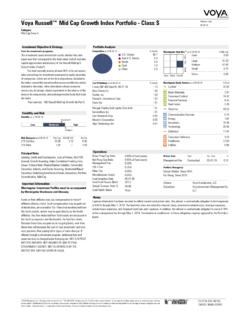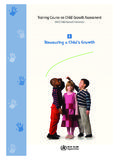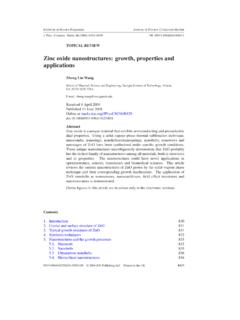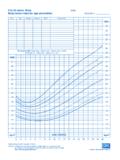Transcription of NFIB SMALL BUSINESS ECONOMIC TRENDS
1 Washington, DC 20004. Suite 200. 1201 F Street NW. NFIB. ECONOMIC TRENDS . SMALL BUSINESS . NFIB. SMALL BUSINESS . ECONOMIC TRENDS . William C. Dunkelberg Holly Wade May 2018. November 2018. SMALL BUSINESS OPTIMISM INDEX COMPONENTS. S e a s ona lly C ha ng e from C ontribution to Inde x C ompone nt A djus te d Le ve l La s t Month Inde x C ha ng e Plans to Increase Employment 22% 0 *%. Plans to Make Capital Outlays 29% -1 *%. Plans to Increase Inventories 2% -3 *%. Expect Economy to Improve 22% -11 *%. Expect Real Sales Higher 26% -4 *%. Current Inventory -5% -3 *%. Current Job Openings 34% -4 *%. Expected Credit Conditions -5% 0 *%. Now a Good Time to Expand 29% -1 *%. Earnings TRENDS -4% -1 *%. Total Change -28 100%. Based on a Survey of SMALL and Independent BUSINESS Owners _____.
2 NFIB Research Center has collected SMALL BUSINESS ECONOMIC TRENDS Data with Quarterly surveys since 1973 and monthly surveys since 1986. The sample is drawn from the membership files of the National Federation of Independent BUSINESS (NFIB). Each was mailed a questionnaire and one reminder. Subscriptions for twelve monthly SBET. issues are $250. Historical and unadjusted data are available, along with a copy of the questionnaire, from the NFIB Research Center. You may reproduce SMALL BUSINESS ECONOMIC TRENDS items if you cite the publication name and date and note it is a copyright of the NFIB Research Center. NFIB Research Center. ISBS #0940791- 24-2. Chief Economist William C. Dunkelberg and Director of Research and Policy Analysis Holly Wade are responsible for the report.
3 _____. Summary .. 1. Commentary.. 3. Optimism .. 4. Outlook .. 4. Earnings .. 6. Sales .. 7. Prices .. 8. Employment.. 9. Compensation .. 10. Credit Conditions .. 12. Inventories .. 14. Capital Outlays.. 16. Most Important Problem .. 18. Survey Profile .. 19. ECONOMIC Survey.. 20. OPTIMISM INDEX. SMALL BUSINESS optimism slightly dipped in November. The Index declined points to with more than half the decline attributable to Expected BUSINESS Conditions and Expected Real Sales. The November reading continues the string of exceptionally strong readings that started with the 2016 election results. Labor markets remain extremely tight, with a record 25 percent of owners identifying the scarcity of qualified (not just skilled ) labor as their top BUSINESS problem.
4 Capital spending and job creation plans improved. Job openings gained 6 points, although inventory investment plans faded. Expected real sales and expected BUSINESS conditions six months out did fall 7 and 5 points respectively, and the percent viewing the current period as a good time to expand lost 1 point. On balance, optimism faded modestly in November, but the decline seems unrelated to the election. LABOR MARKETS. Job creation was solid in November at a net addition of workers per firm (including those making no change in employment), up slightly from September and October readings at Sixteen percent (unchanged) reported increasing employment an average of workers per firm and 11 percent (unchanged) reported reducing employment an average of workers per firm (seasonally adjusted).
5 Sixty percent reported hiring or trying to hire (unchanged), but 53. percent (87 percent of those hiring or trying to hire) reported few or no qualified applicants for the positions they were trying to fill (unchanged). Twenty-five percent of owners cited the difficulty of finding qualified workers as their Single Most Important BUSINESS Problem (up 2 points), matching the record high reached in August. Thirty-four percent of all owners reported job openings they could not fill in the current period, down 4 points from last month's record high. Fourteen percent reported using temporary workers (unchanged). A. seasonally-adjusted net 22 percent plan to create new jobs, unchanged from October's reading. Job creation plans were strongest in manufacturing (a net 26 percent).
6 However, with labor markets tight, it will be difficult to fulfill those plans. Thirty percent have openings for 1 | NFIB SMALL BUSINESS ECONOMIC TRENDS Monthly Report skilled workers and 12 percent have openings for unskilled labor. CAPITAL SPENDING. Sixty-one percent reported capital outlays, up 2 points from October. Of those making expenditures, 45 percent reported spending on new equipment (up 2 points), 22 percent acquired vehicles (down 4 points), and 18 percent improved or expanded facilities (unchanged). Eight percent acquired new buildings or land for expansion (up 2 points) and 15 percent spent money for new fixtures and furniture (up 1 point). Twenty-nine percent plan capital outlays in the next three to six months, down 1 point, but among the strongest readings in the recovery period.
7 Continued strong growth is using up capacity and owners need to replace and expand to meet the demand for their products and services. This survey was conducted in November 2018. A sample of 5,000 SMALL - BUSINESS owners/members was drawn. Seven hundred (700) usable responses were received a response rate of 14 percent. SALES AND INVENTORIES. A net 9 percent of all owners (seasonally adjusted) reported higher nominal sales in the past three months, up 1 point and historically very strong. Thirty percent or more of the owners in construction, manufacturing, retail, and transportation reported quarterly improvements in sales. The net percent of owners expecting higher real sales volumes fell 4 points to a net 24 percent of owners, a solid reading but a significant decline.
8 The net percent of owners reporting inventory increases rose 2 points to a net 6 percent (seasonally adjusted), the strongest reading since 2004. The net percent of owners viewing current inventory stocks as too low fell 3 points to a net negative 5 percent, suggesting that the stock of inventories is beginning to look a bit excessive given the expected decline in real sales noted above. Still, the net percent of owners planning to add to stocks held at a net 2 percent of owners. COMPENSATION AND EARNINGS. Reports of higher worker compensation was unchanged at a net 34. percent of all firms, very strong. Plans to raise compensation rose 2. points to a net 25 percent, the highest since 1989. Owners complain at record rates about labor quality issues, with 87 percent of those hiring or trying to hire in November reporting few or no qualified applicants for their open positions.
9 Twenty-five percent (up 2 points, a record high) selected finding qualified labor as their top BUSINESS problem, more than cited taxes or regulations as their top challenge. The frequency of reports of positive profit TRENDS fell 1 point to a net negative 4 percent reporting quarter on quarter profit improvements, continuing a streak of historically favorable profit reports. CREDIT MARKETS. Three percent of owners reported that all their borrowing needs were not satisfied, unchanged. Thirty-two percent reported all credit needs met (up 2 points) and 47 percent said they were not interested in a loan, down 5 points, an indicator that loan demand may pick up. Five percent reported their last loan was harder to get than the previous one, up 1 point but historically low.
10 Two percent reported that 2 | NFIB SMALL BUSINESS ECONOMIC TRENDS Monthly Report financing was their top BUSINESS problem (unchanged) compared to 19. percent citing taxes, 13 percent citing regulations and red tape, and 25. percent the availability of qualified labor. The percent of owners reporting paying a higher rate on their most recent loan rose 2 points to 19 percent, the highest since 2007 prior to the Federal Reserve taking control of rates. Thirty-two percent of all owners reported borrowing on a regular basis (unchanged). The average rate paid on short maturity loans fell 30 basis points to percent. INFLATION. The net percent of owners raising average selling prices was unchanged at a net 16 percent, seasonally adjusted. Seasonally adjusted, a net 29 percent plan price hikes (up 1 point), the highest since August 2008.









